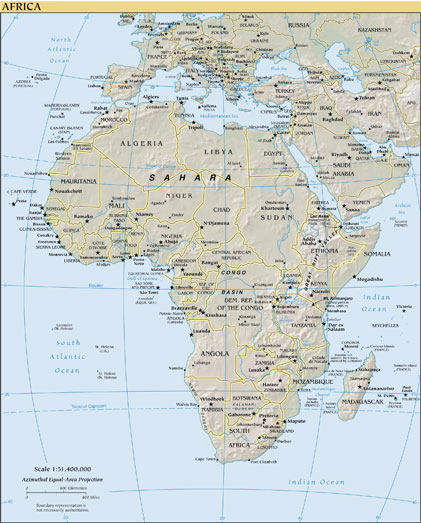Habitat and History
The habitat of HIV is found within humans. The original host and habitat of HIV has been narrowed down to West-Central African Chimpanzees. This area is in a very similar location to where malaria was found. To learn more about malaria and it's origin, click here! It is still unknown why HIV didn't largely occur until the 20th century. Some speculation as to how HIV was introduced into humans is when hunters were exposed to the chimpanzee blood through hunting and field-dressing. Some chimpanzees are currently infected with SIV (Simian Immunodeficiency Virus), yet are resistant to the HIV/AIDS stress on the immune system. Chimpanzees are 98% identical to humans in their genomes. There is an interesting link between Chimpanzees and humans, the more we learn about the similarities the better off we may be in finding a cure for HIV. A spring 2007 student created a webpage designed around chimpanzees, to check it out click here! Another similar animal that is found in Africa is the Eastern Gorilla.
Geographically we can now point to Africa as the original home of HIV. The majority of current HIV infection is found in Sub-Saharan Africa.
There have been three main patterns of HIV transmission, pattern 1, pattern 2 and pattern 3. It is important to note that most of this information is probable because much of the information about HIV is still unknown.
- HIV pattern 1: Mid 1970's to 1985. Occurred in the U.S., Mexico, Canada, Western Europe, Australia, Central and South America. This transmission probably occurred through homosexual males and intravenous drug users. Prostitutes and spouses were the main source of HIV in heterosexuals. As a result of this, the male to female ration in these countries is about 10 or 15:1
- HIV pattern 2: Late 1970's to early 1980's. This took place in eastern Africa, Caribbean, and Haiti. Unlike the first HIV pattern, much of the transmission occurred through heterosexuals.
- HIV pattern 3: Introduced in the late 1980's. HIV spread through North Africa, the middle east, Asia and parts of the Pacific.
Most of these patterns were probably spread to one another because of contaminated blood products and sexual relationships with individuals from the other regions.
